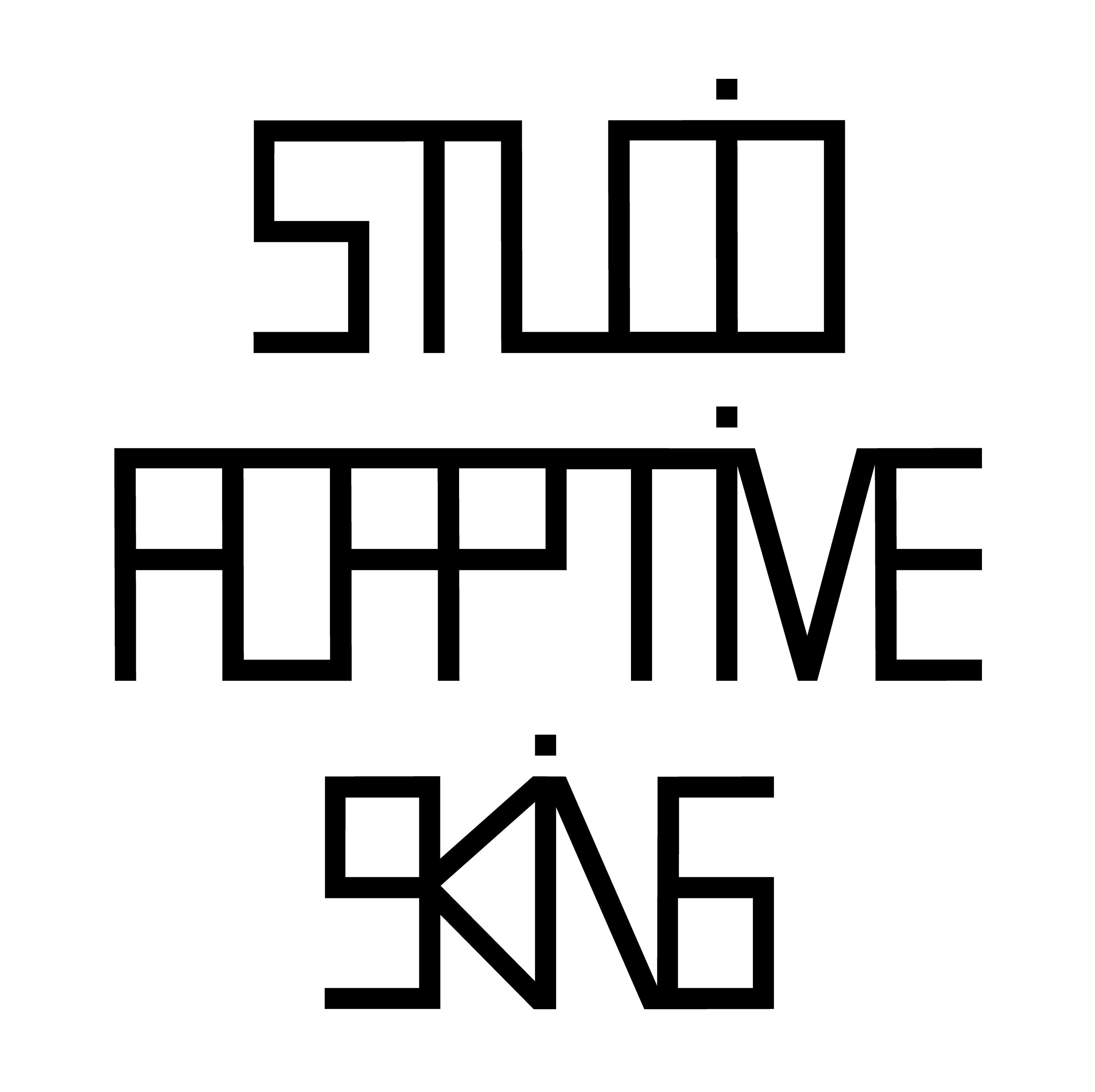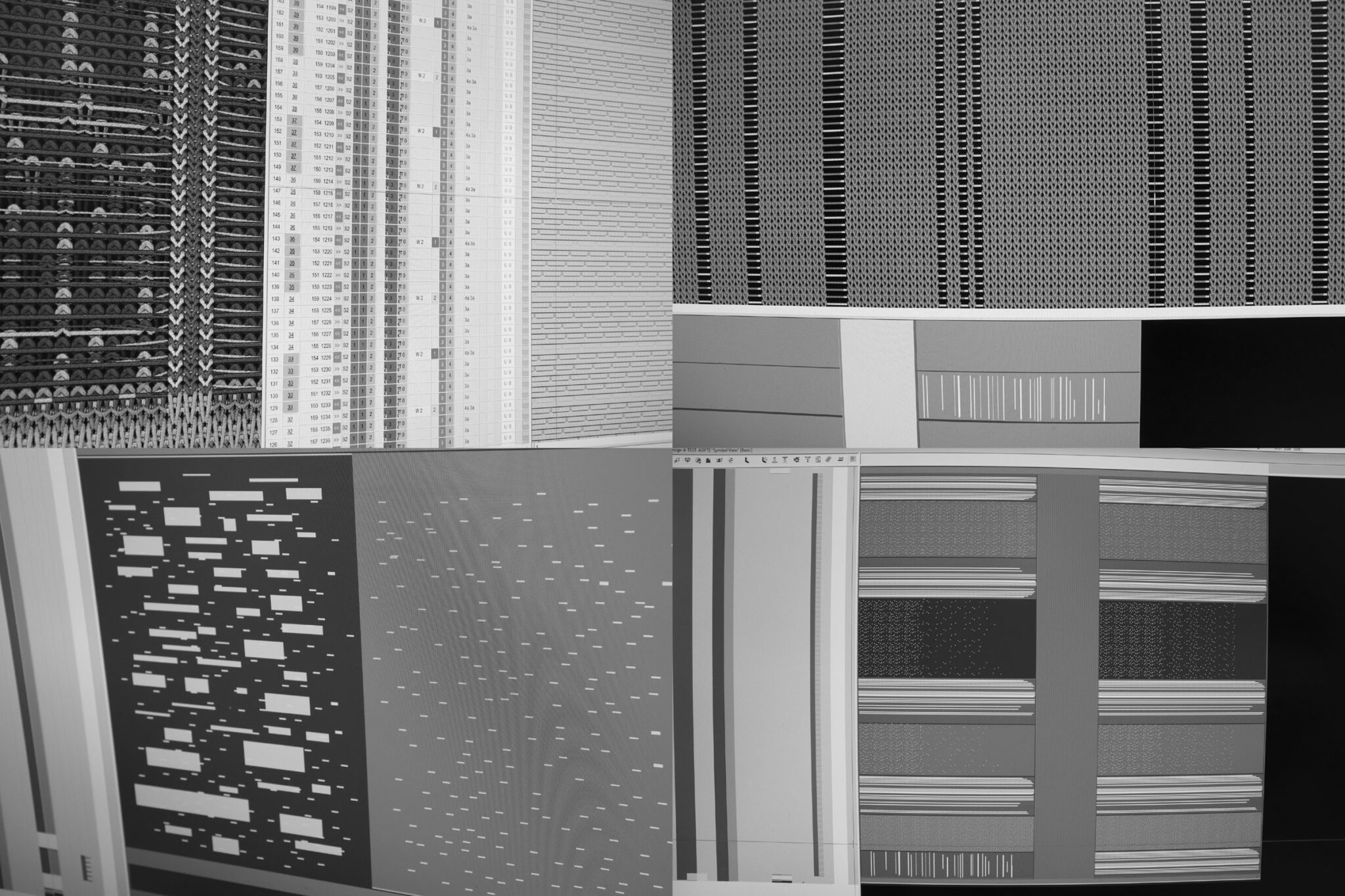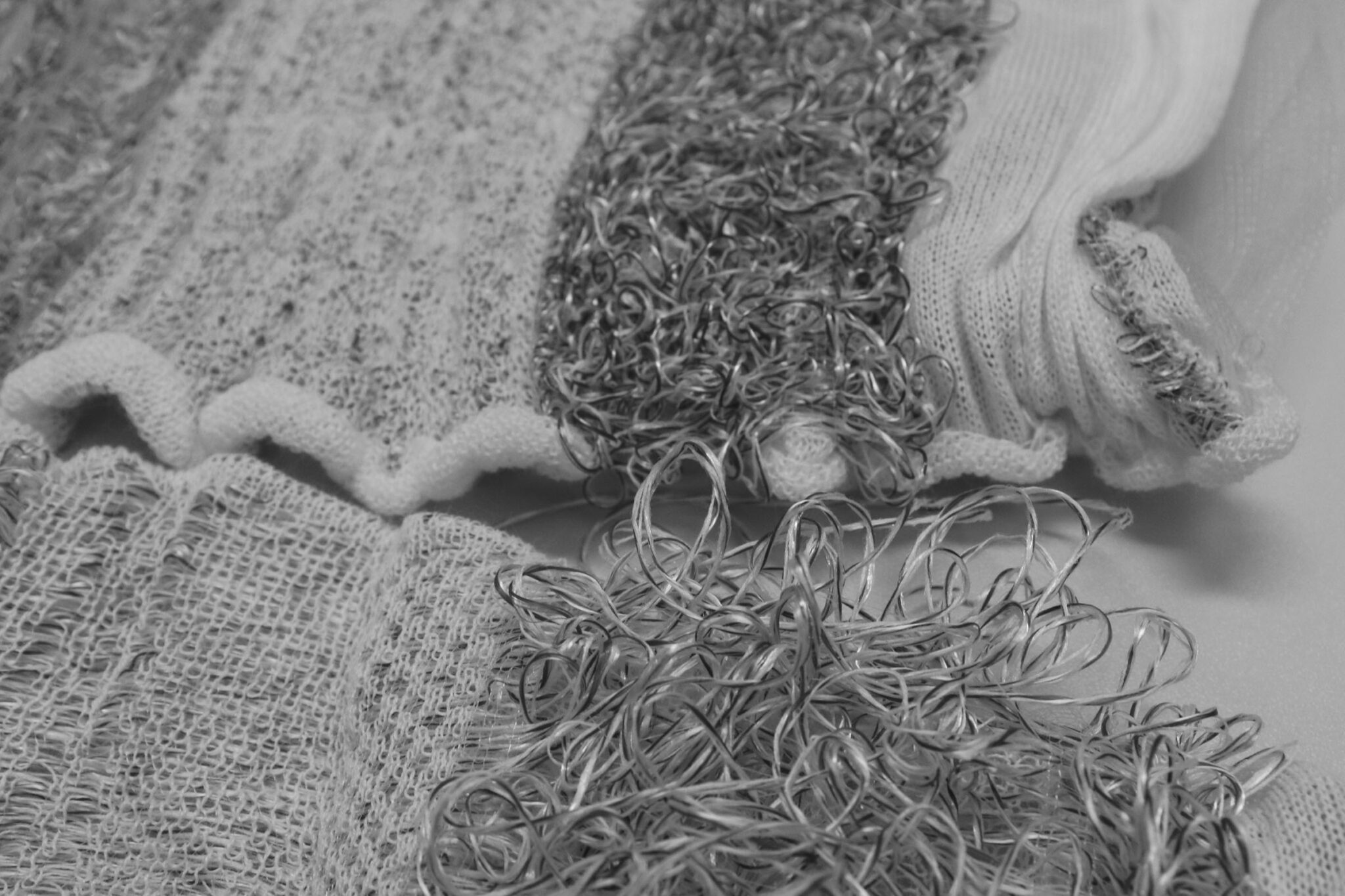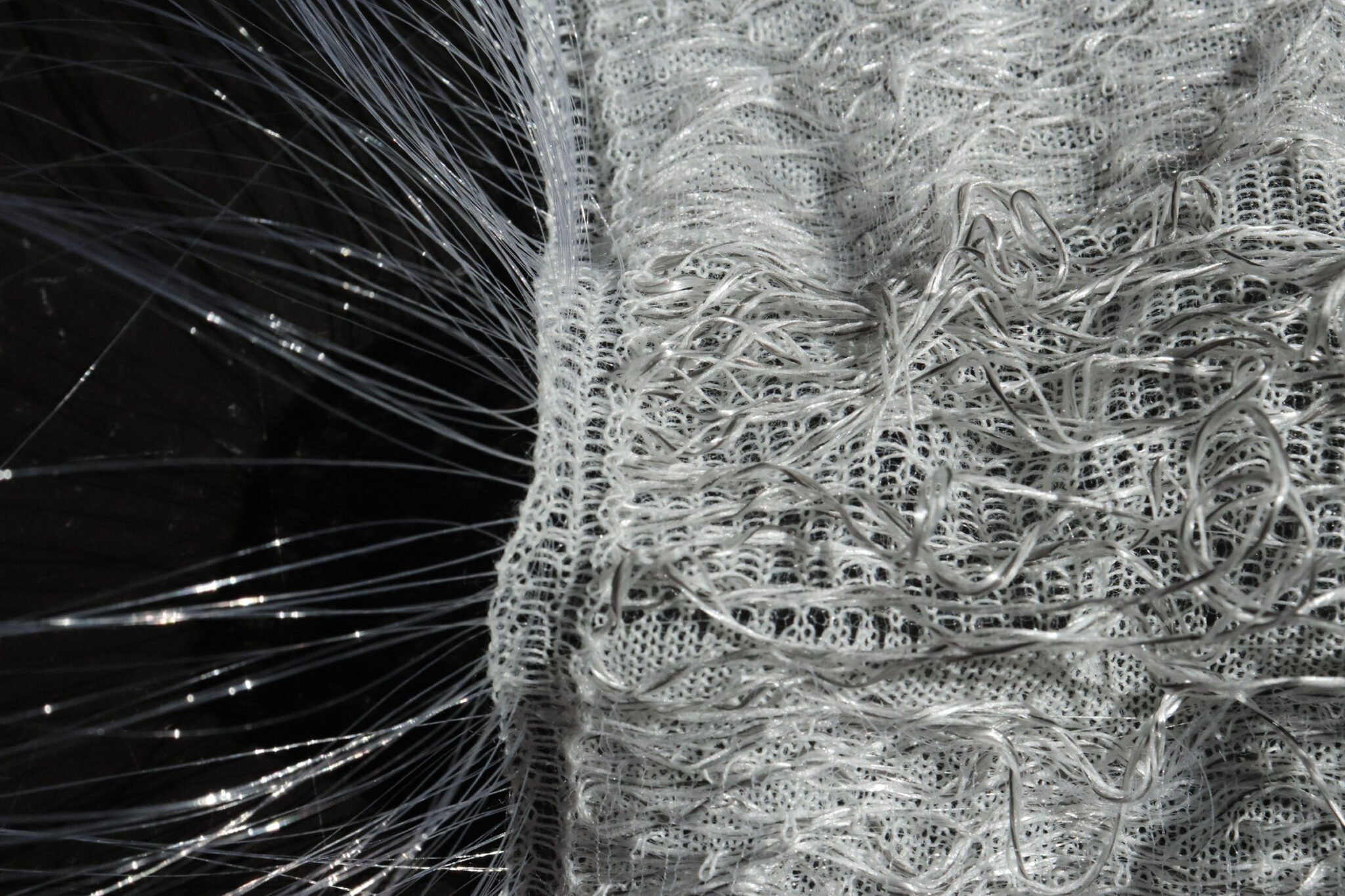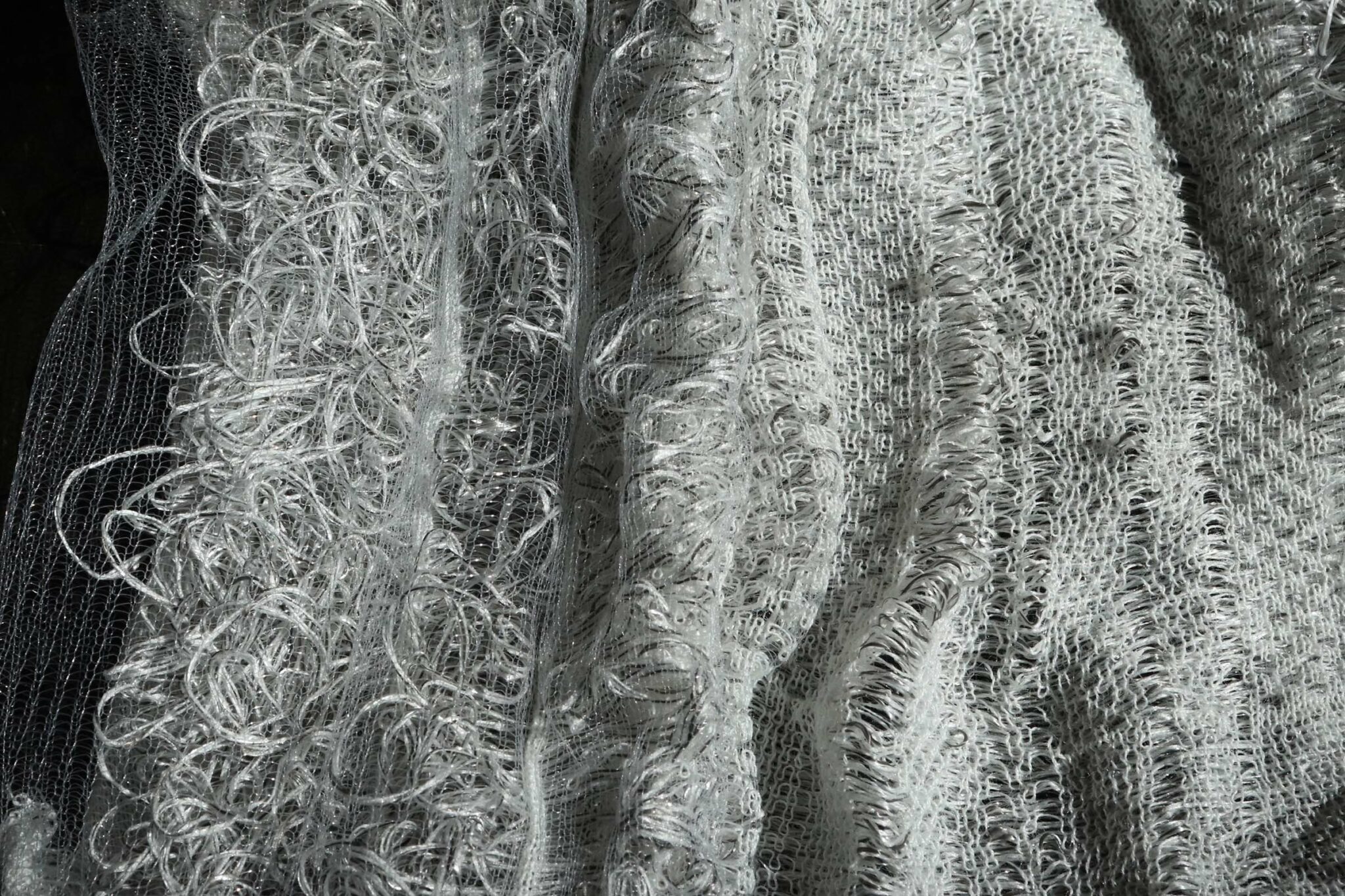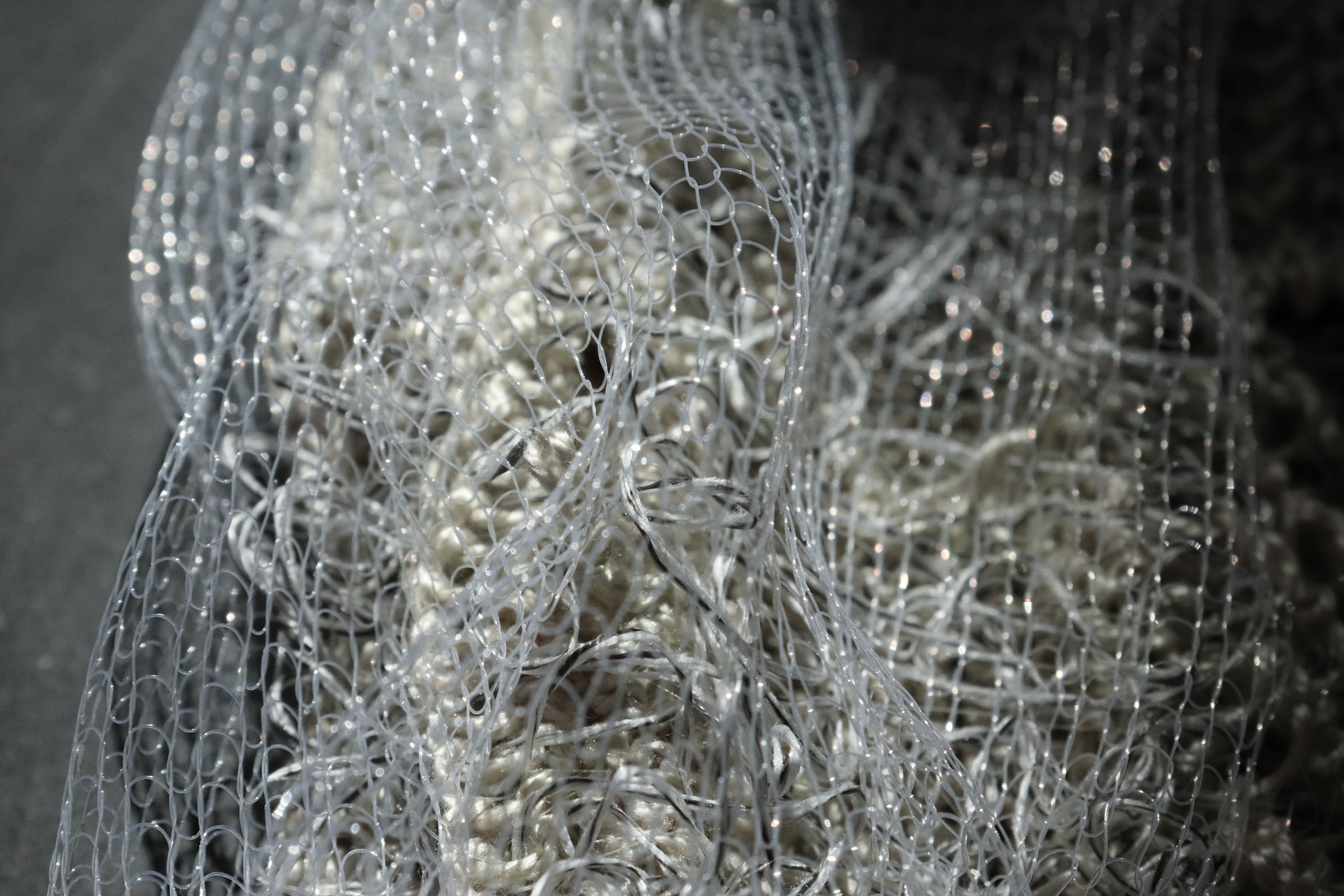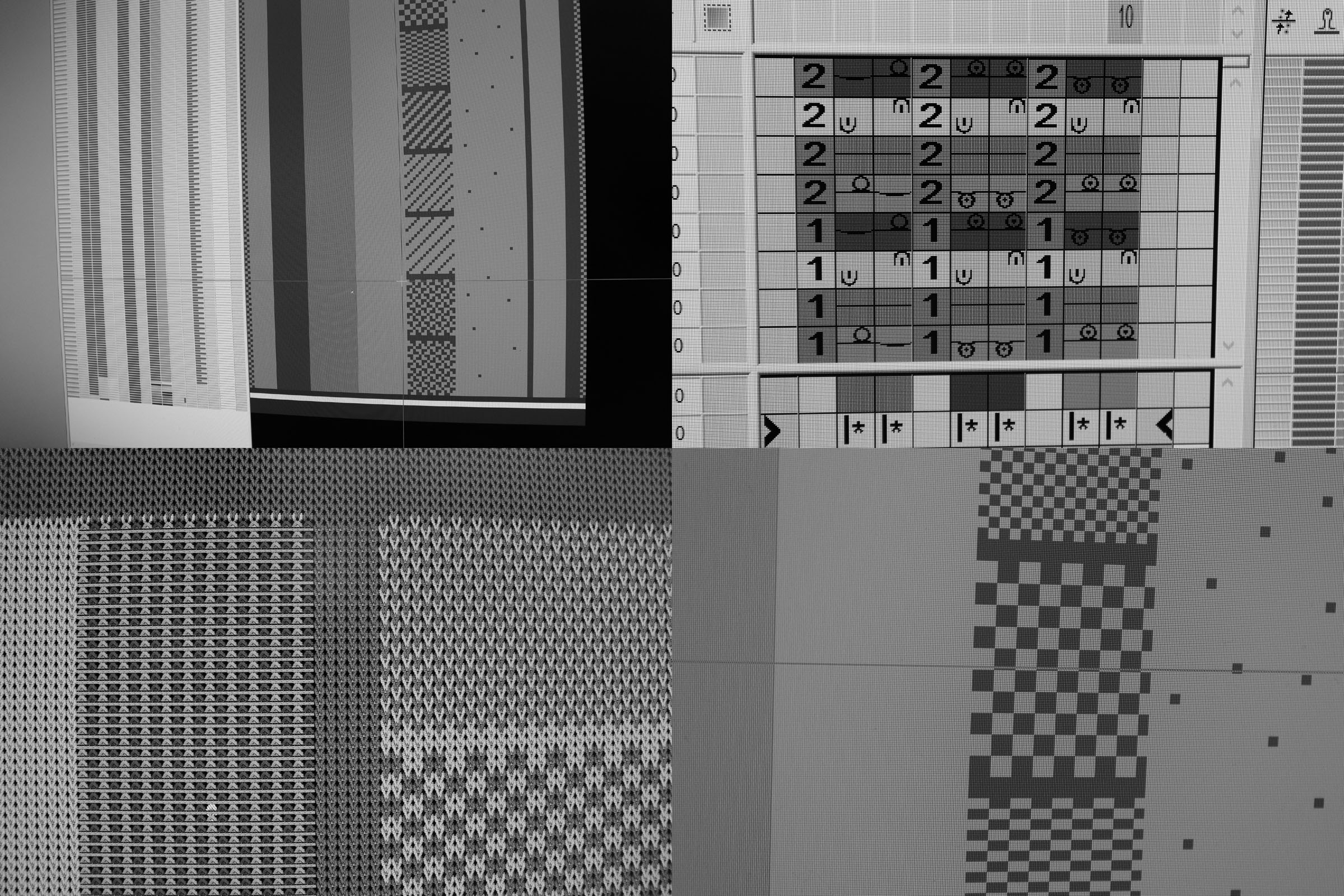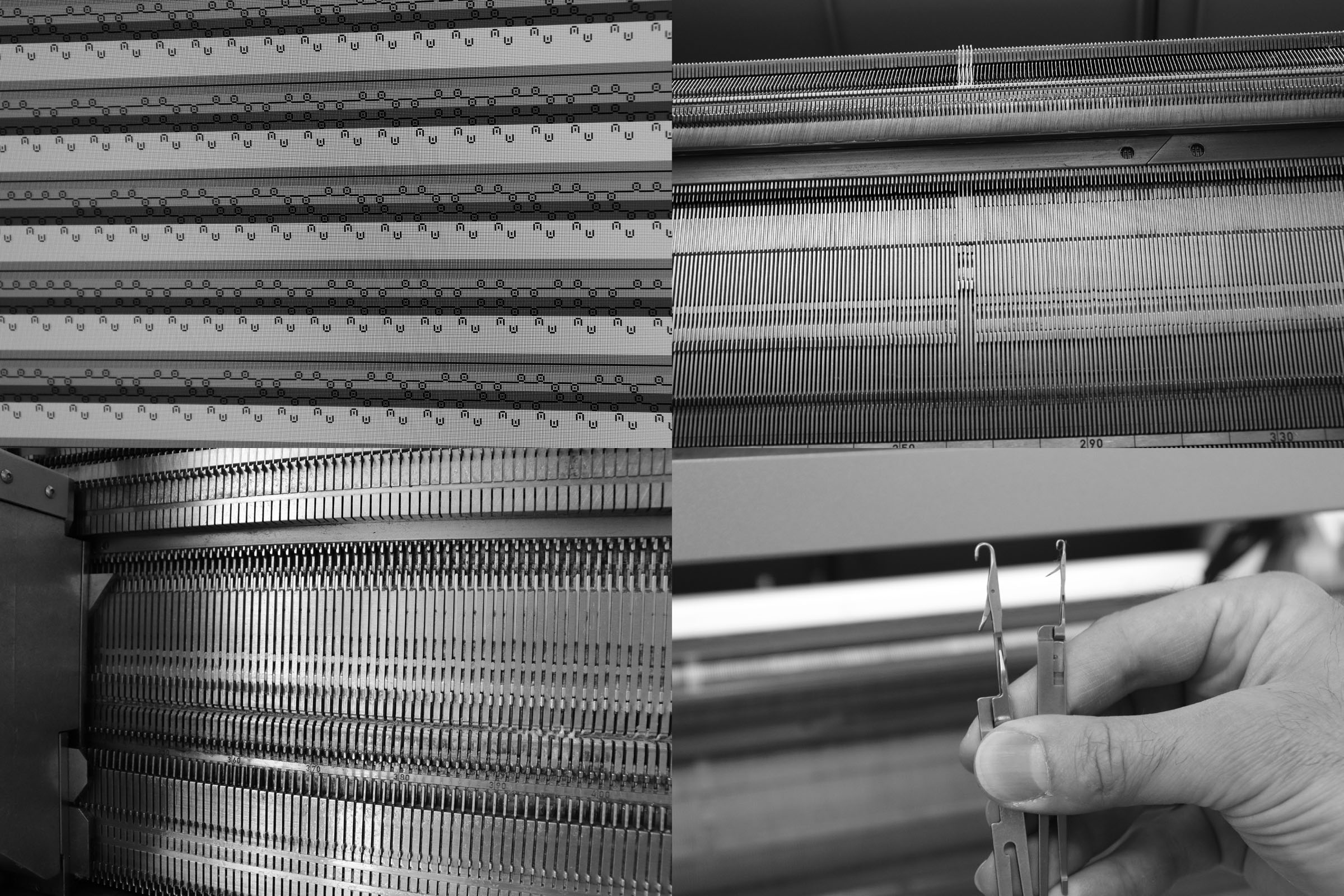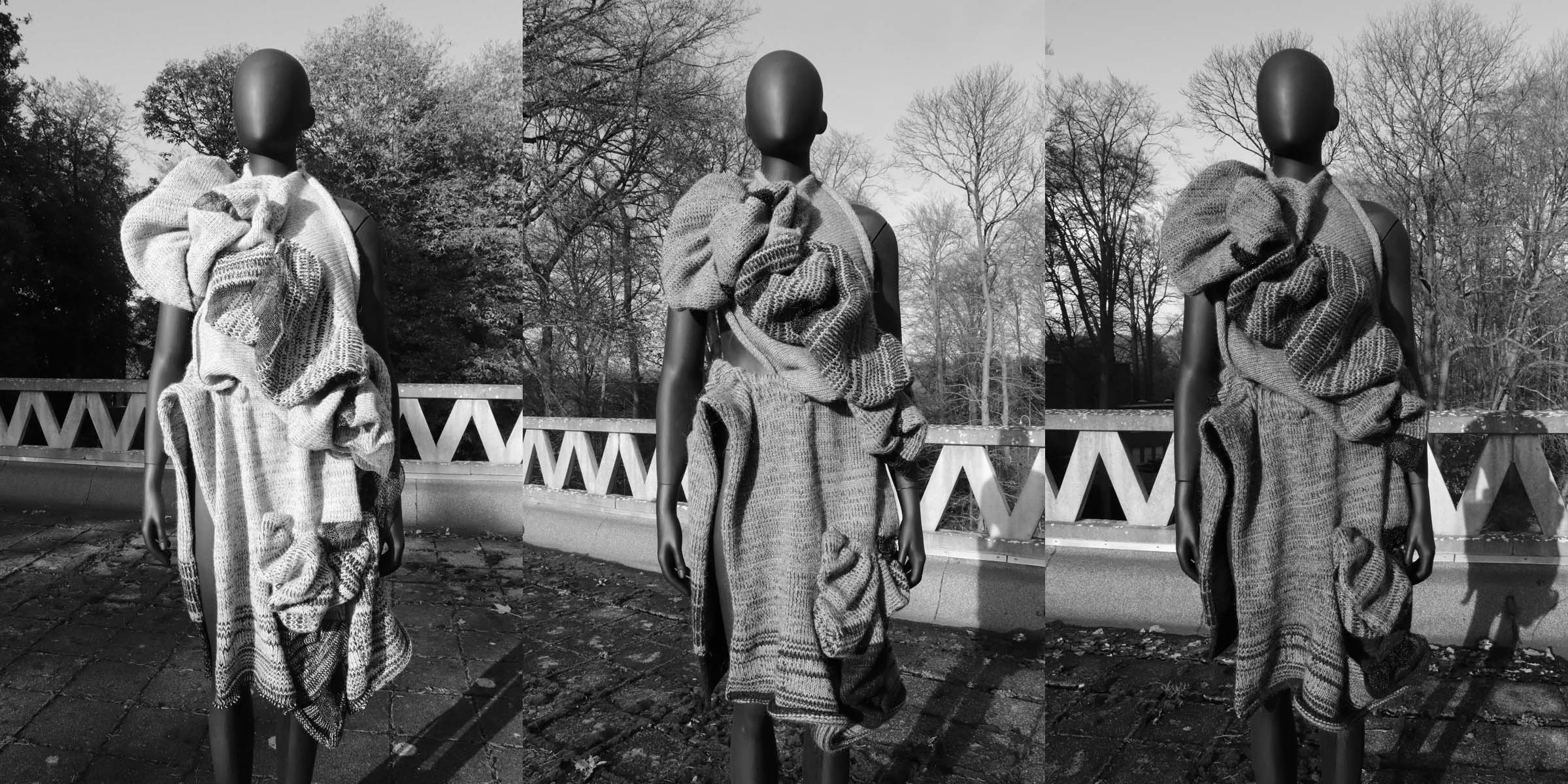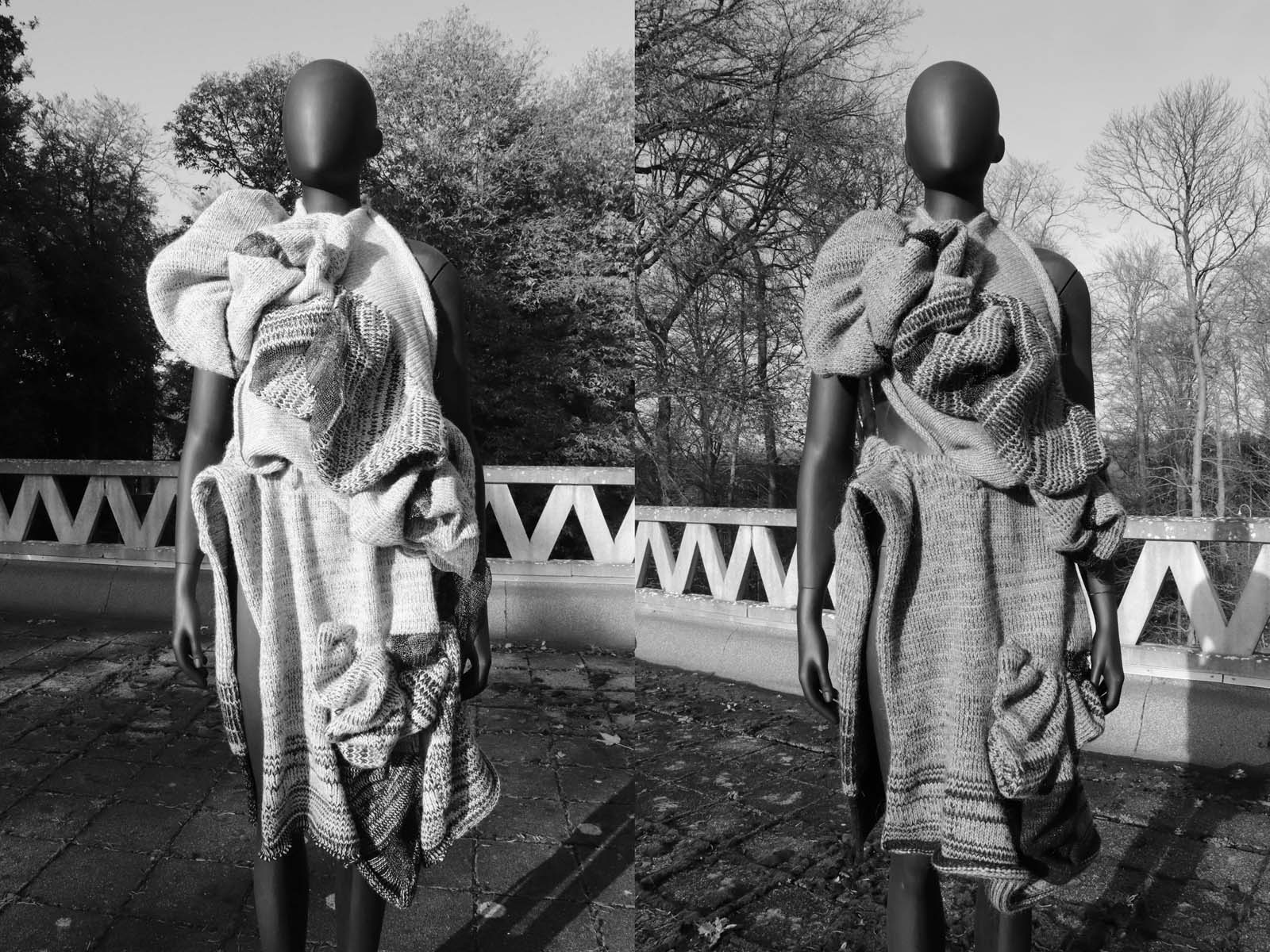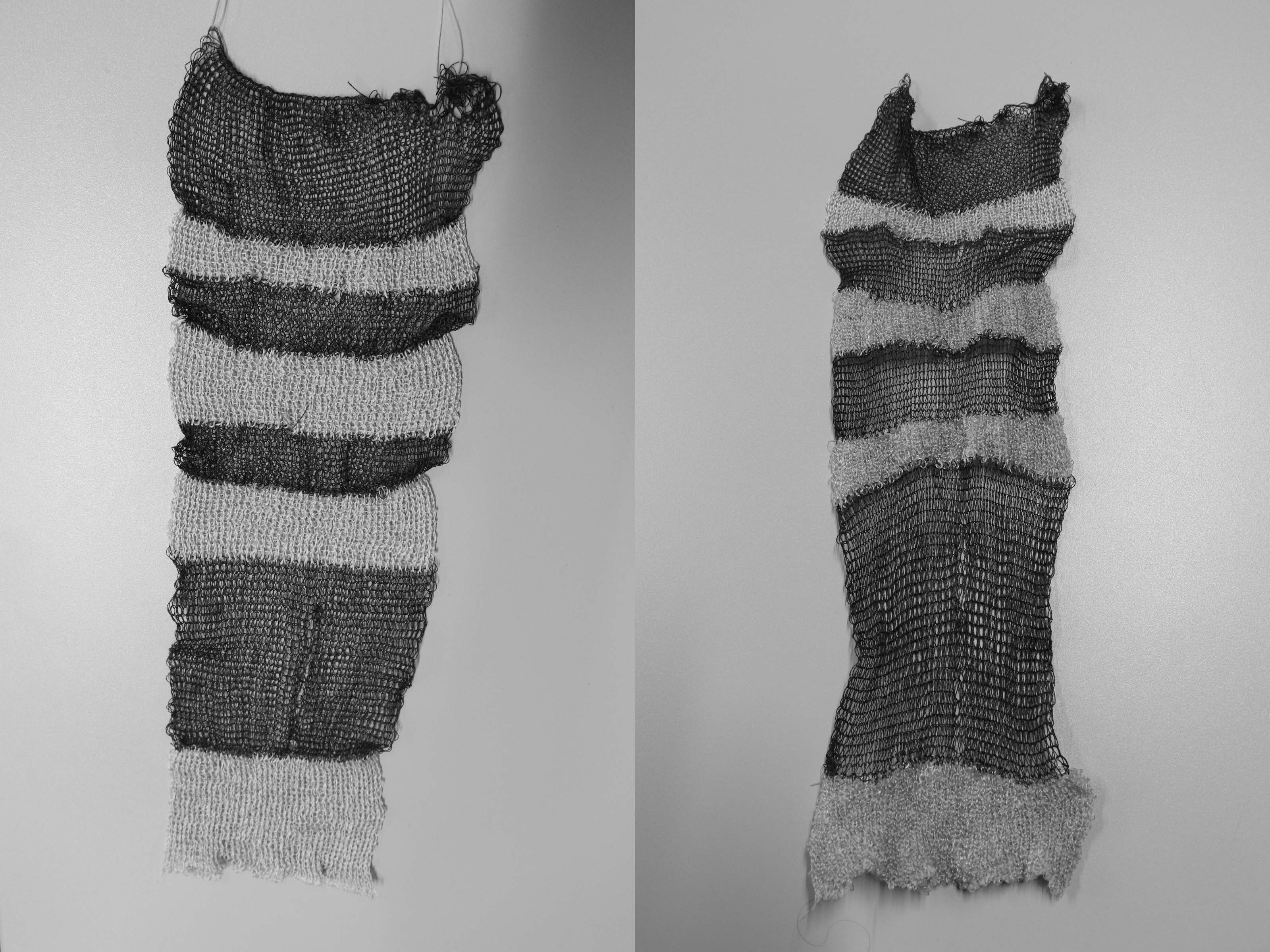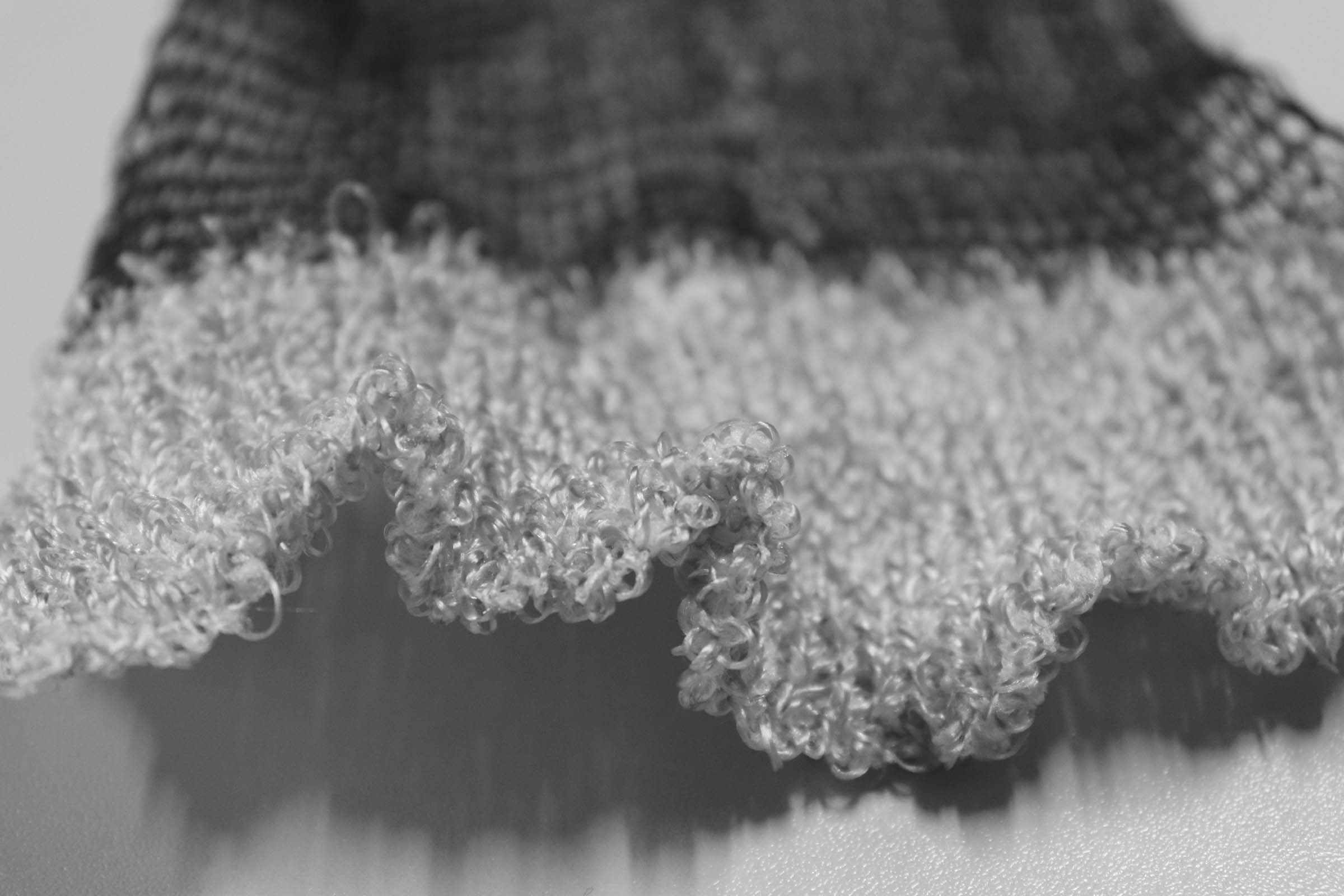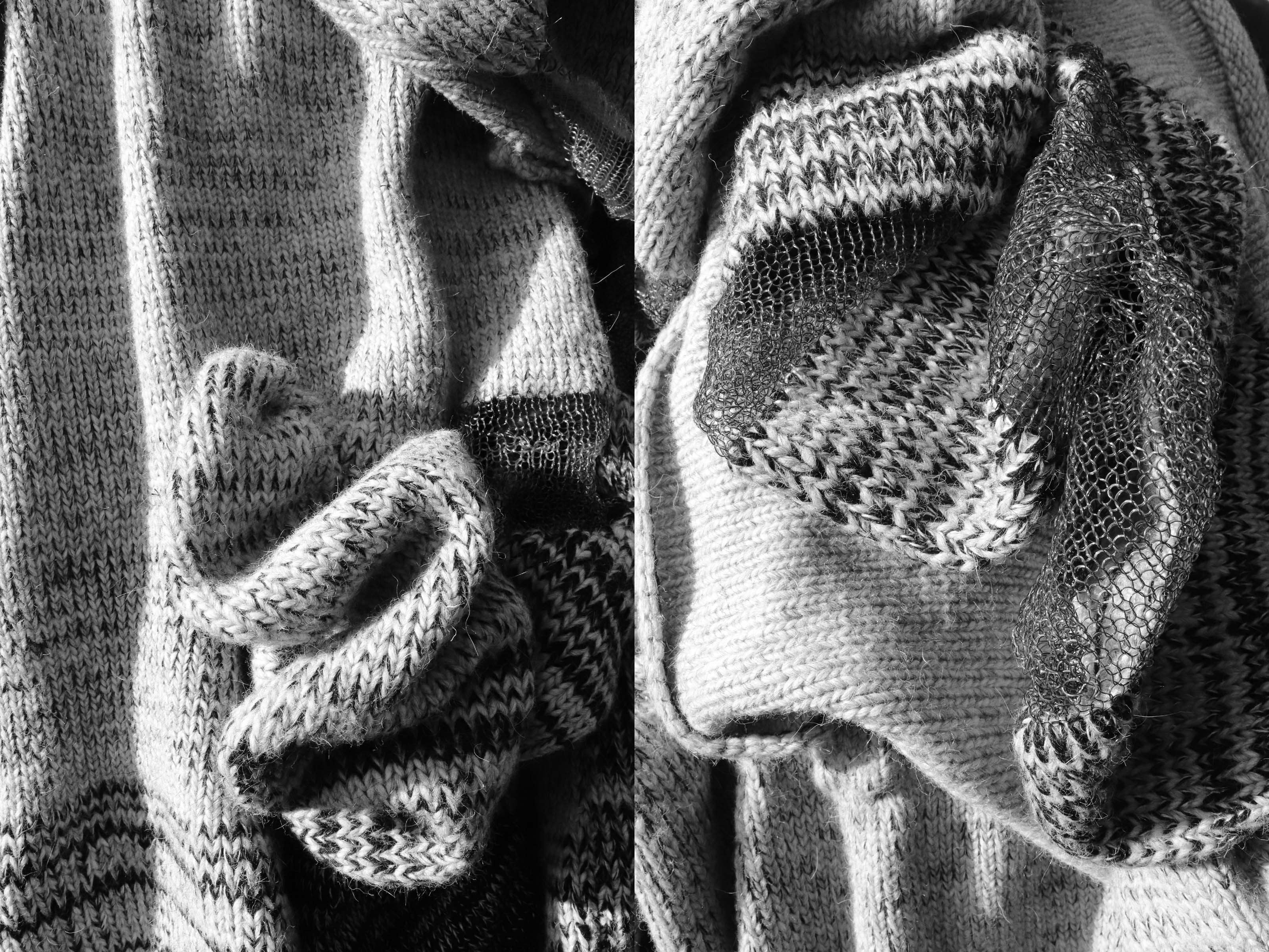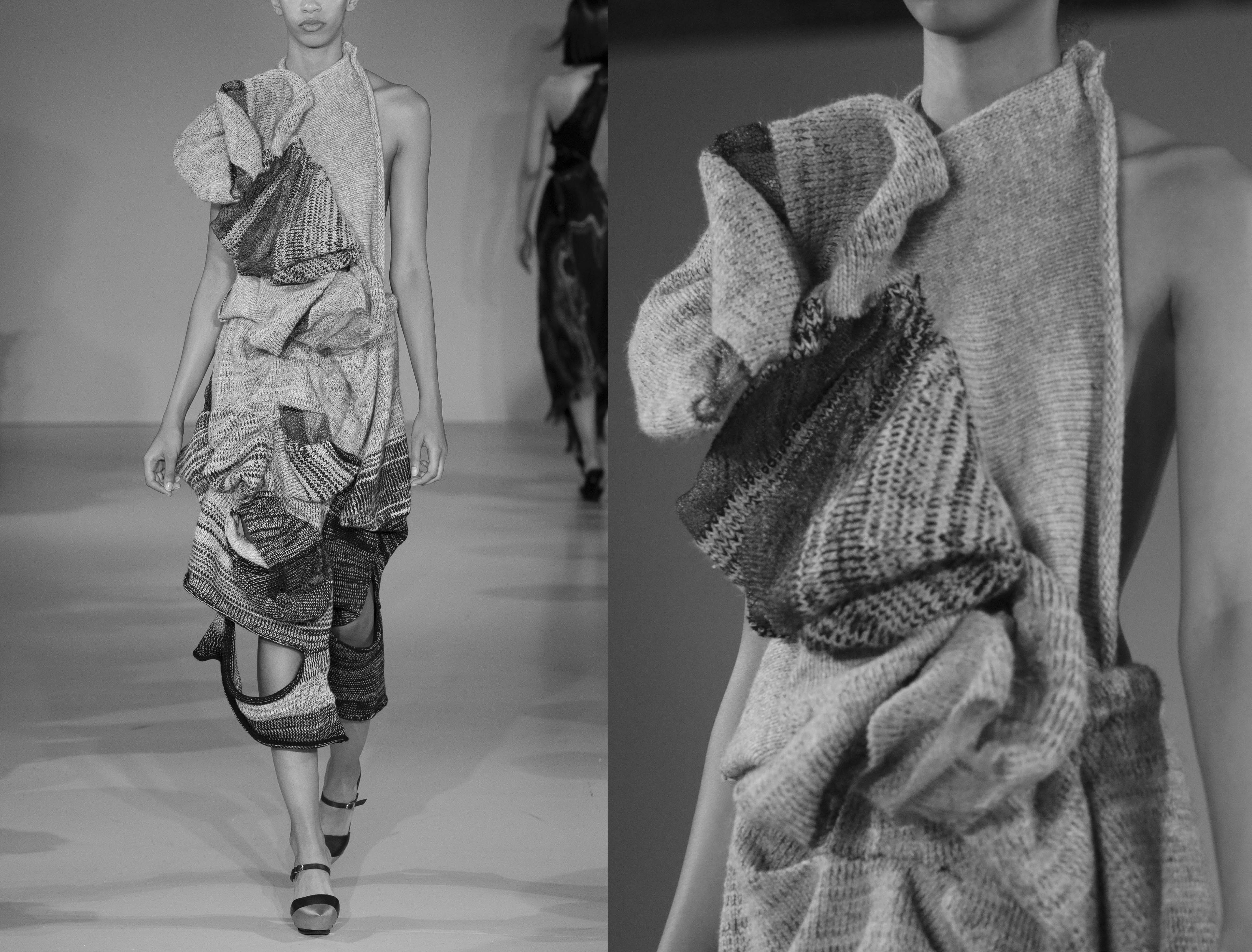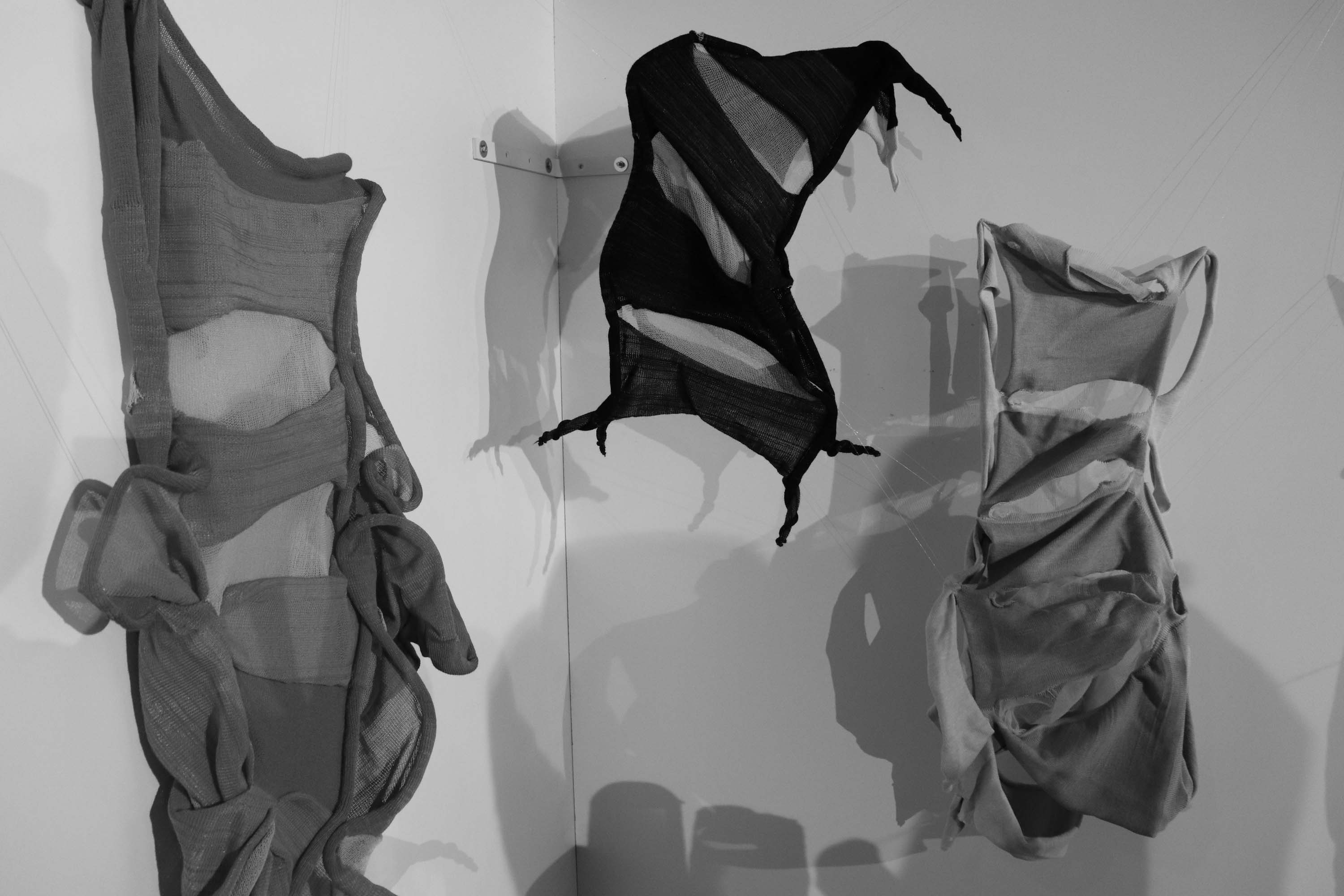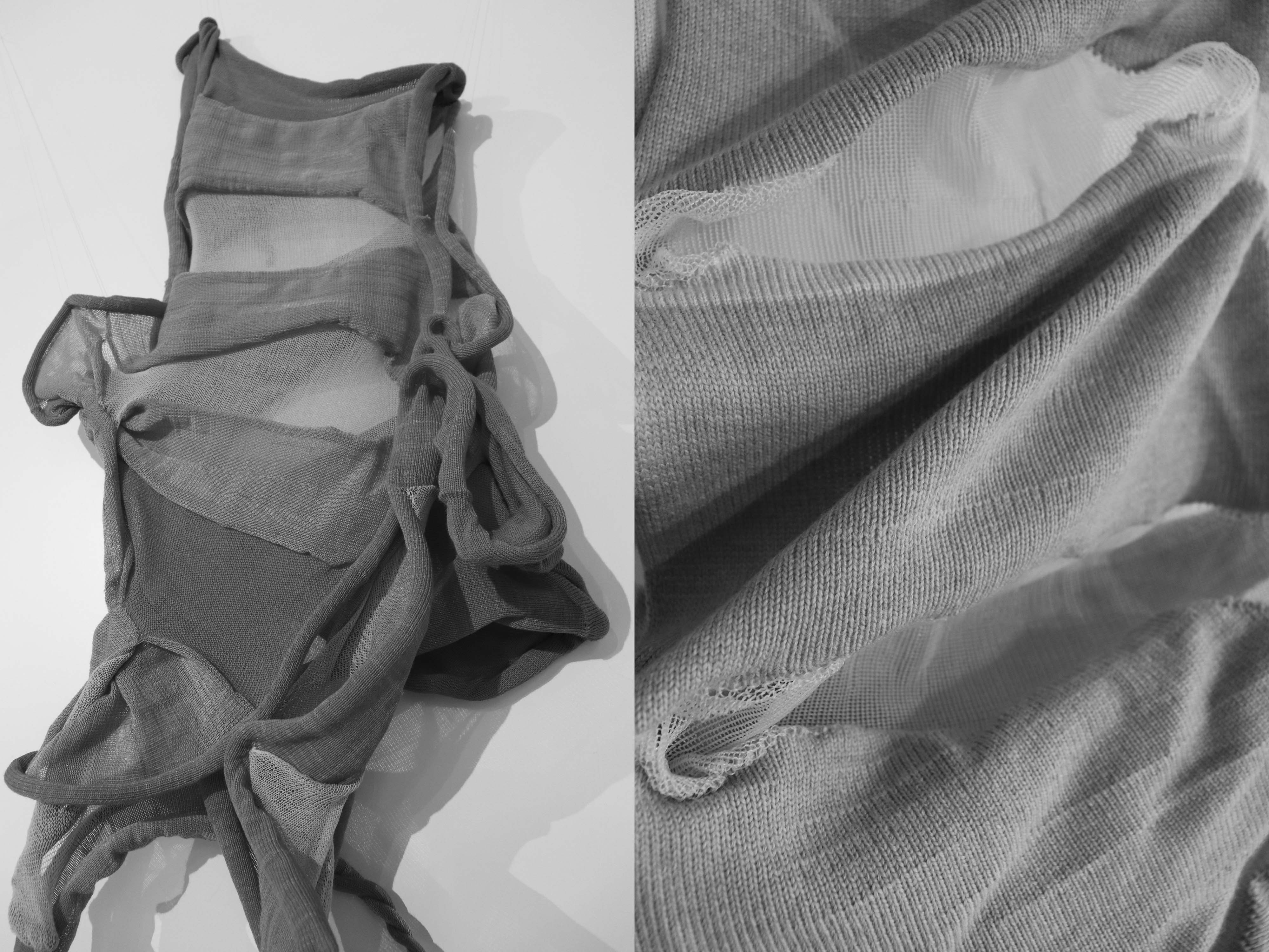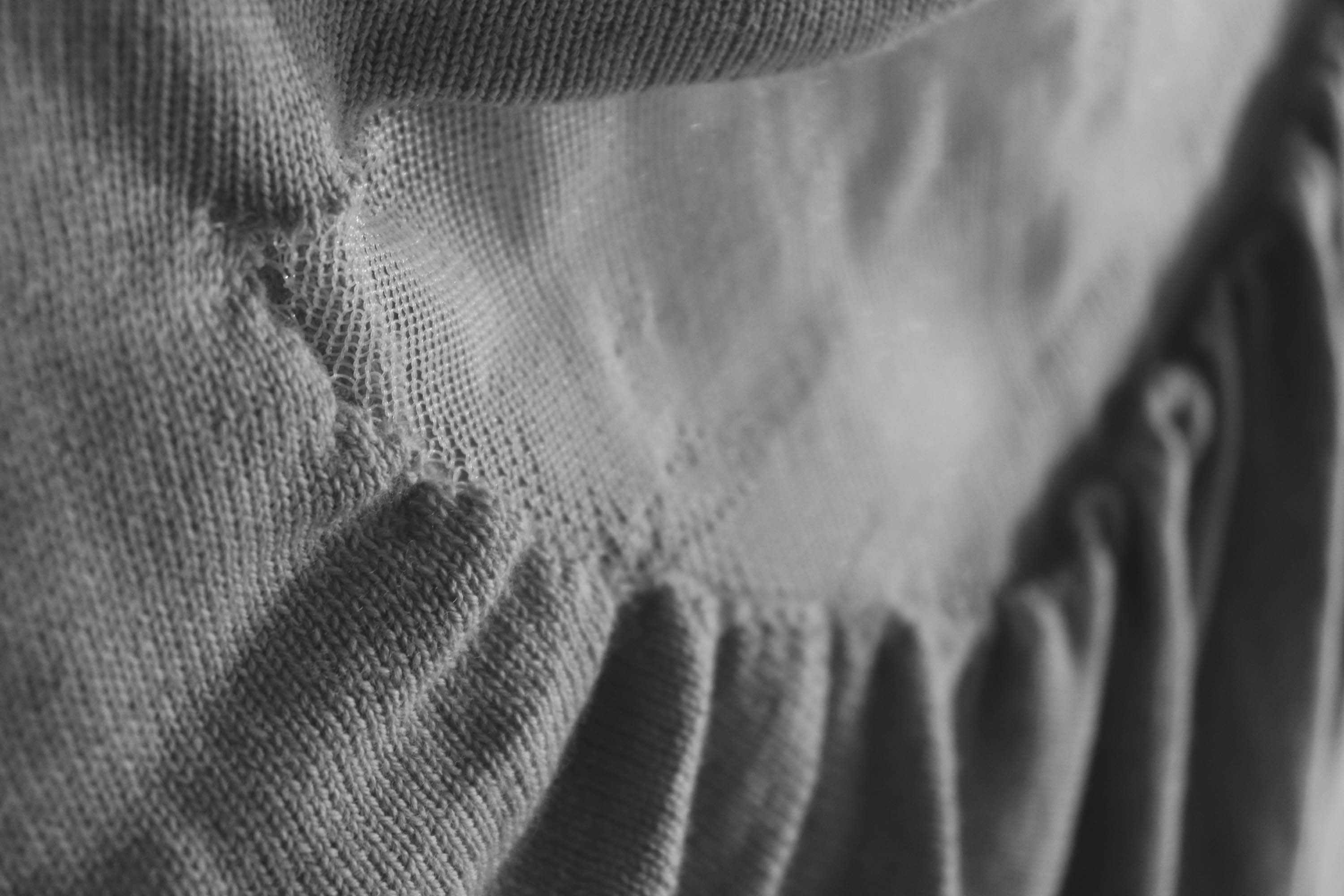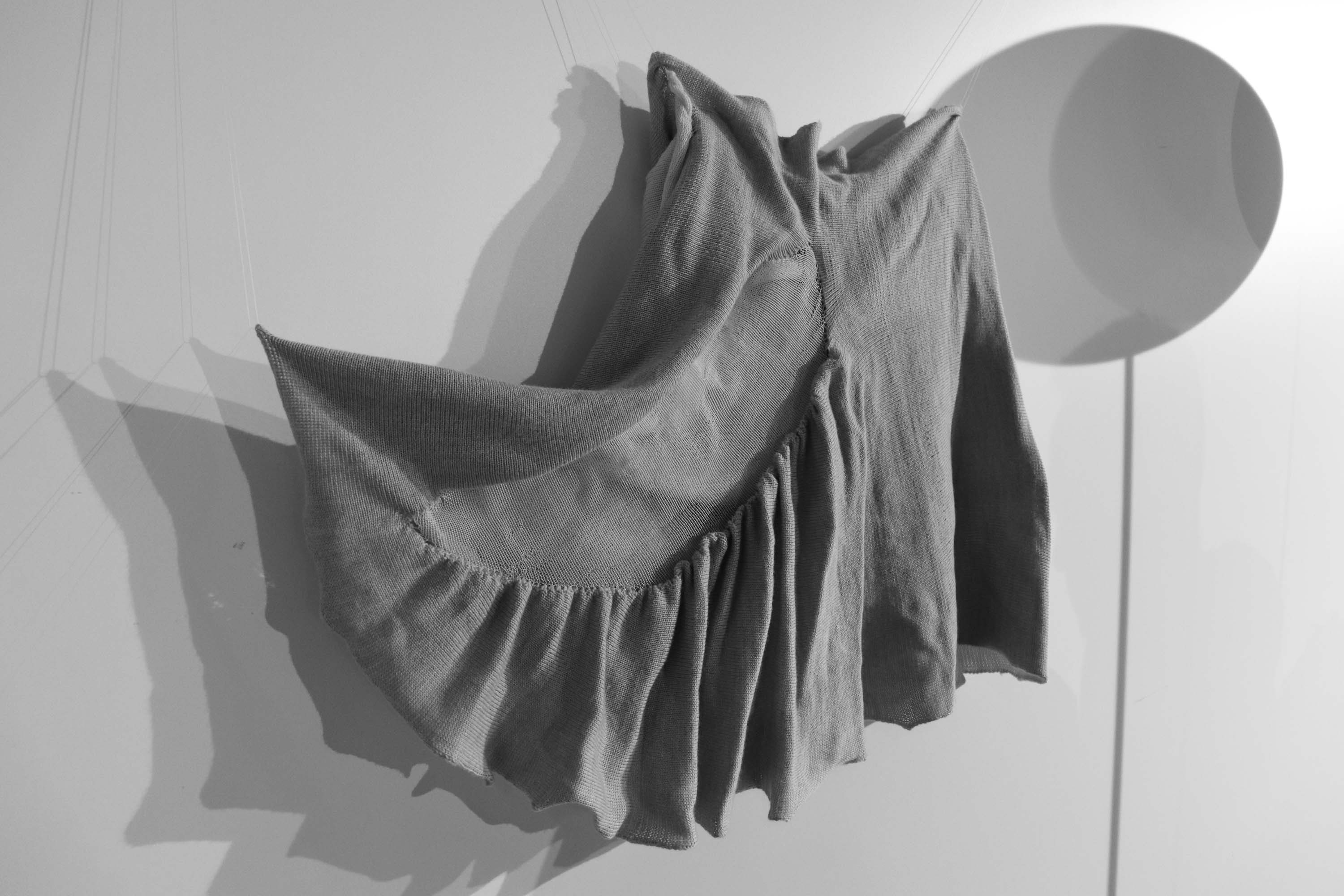Update 7: 13-10-2020
After the weaving production was finished, I continued working with product developer Damien Semerdjian at TextileLab Tilburg. He produced several new samples using the ADF knitting machine. I asked him to duplicate a few samples and to compare the deformation process. During the first experiment we applied water to make the fabric wet. It was very surprising to see how well the Aitex Archi-Filament was behaving within this knitting structure. Based on these results Damien and I were able to choose the most interesting samples. The next step would be to produce entire garments, based on the best samples that we selected together.
We choose to work horizontal and vertical with the ADF knitting machine, meaning that we could flip the blueprint around and use the Archi-Filaments in different directions. This was very interesting for me to see, because you can not flip the pattern around working with the weaving techniques. The tricky part with the knitting production is that if there is a flaw, meaning that a hole can be created or when a yarn is broken, the entire structure will slightly break the design. Compared to weaving, knitting is a much more delicate and fragile process. Sometimes we needed to re-start the whole production process, re-creating an entire garment. This can be a very time consuming process.
In the end we were able to create 6 garments, using several techniques for each garment. This was a great start for me to learn more about the knitting world. My idea is that I will continue this road with creating more knitted prototypes in the future. There is a lot more to learn for me in terms of new developed yarns, versus how to incorporate this within knitting structures? The first 6 garments show an experimental diverse overview on several techniques. However, in the future I would like to choose the best initial knitted result and build from there. This was the exact same way of working that I experienced during the first 6 years, experimenting with several jacquard weaving techniques. I feel that with project Marinero we reached a high level with weaving and created an experimental initial start with knitting. I would like to bring my knowledge with weaving and knitting to a more balanced level. Maybe we can bring those 2 worlds together in the future, complimenting each other throughout a new collection.-
Update 6: 29-07-2020
*TextileLab knitting test
The process of TextileLab Tilburg started with developing knitted samples. It´s the first time for me to work on creating knitwear. I instantly realized that this process is way different compared to weaving. The knitting product developers did not completely understand me, because I was using a lot of weaving development terminologies. So, it was important for me to learn about the knitting process step by step.
It is possible to combine weaving with knitting. I decided to apply the Adaptive Archi-Filament as an ”inlay technique”, meaning that this yarn will be laying between the knitted structures. These straight open lines will allow the Archi-Filaments to tangle into a new shape. The looping effect will push towards the knitted structures, meaning that this movement will create organic shapes to the textile.
Damien Semerdjian prepared some experimental fabric samples, showcasing the basics that we would probably need. It was interesting for me to see what kind of binding we can apply. He surprised me with the inlay techniques. I did not realize that you can create a net texture on top of the loose hanging Archi-Filaments. This already creates a very dynamic 3D shape, but it also does something special with the color effect.
For the first tryouts we used Seacell yarns, in combination with Archi-Filaments and white monofilaments. Damien wanted me to look at the bindings and choose which ones I liked the most. He also asked me to prepare a pattern and select the bindings within the fabric blueprint. These first fabric samples motivate me to experiment more in terms of texture versus color.
In terms of using knitting machines we can choose from: the coarse knitting machine & the fine knitting machine. The difference is that the coarse knitting machine has less needles. The larger needles allow you to add more thicker yarns into the machine. For the first sample we used the coarse knitting machine. But my personal preference goes to using the fine knitting machine. This will match aesthetically with the weaving designs.
-
Update 5: 18-01-2020 New beginnings
After the last squid dying test the material started to deform a little more. The knitted garment has changed a few shades darker. Jef decided that the blueprint needs to adapt more towards the simple design of the weaving pattern. The first garment test in collaboration with Kevin has a too defined 3D shape. The only yarn effect within this first test shows shrinking movements. And this is not the aim for project Marinero. Jef will evaluate if the single or double bed knitting machine is suitable for what we are aiming for within project Re-FREAM. The issue is that the curly knitting effect blocks the effect of the Adaptive Archi-Filament. With the weaving we don't have this problem, because the yarns are woven in a straight line. The knitting seems to be the challenge for the architectural filaments.
On the 13th of January Jef had a meeting with the knitting specialist of TextileLab Tilburg ''Suzanne Oude Hengel''. She advised that maybe the TextileMuseum ADF knitting machine would be suitable for the Adaptive Archi-Filament. Suzanne advised to try and design a knitting construction, where you can also simulate weaving effects. This would be an interesting starting point. From here on Jef will take over the creative direction of the knitting developments. The idea is to work in the TextileLab Tilburg on both weaving and knitting developments. Maybe those 2 can even cross each other. This idea seems very promising and creative. More updates will follow soon.
-
Update 4: 16-01-2020 update Kevin x Jef knitting prototype
The third step of the knitting blueprint was to analyse the deforming character of the material. The yarns activate based on warm temperature water. The garment was placed in an old bath outdoors with 40 degrees water and a little bit of squid ink to test both: deforming effect and dying effect. The deforming effect shows a dramatic change in terms of finishing. The frame of the knitted blueprint started curling up. The squid ink test showed a minor change, so this means that the next step will be to do another bath experiment. Updates of the next squid ink dying test will follow soon. Jef will review if the blueprint designed by Kevin is maybe too extravagant compared with the minimalistic weaving blueprint. Maybe the knitting shape now is already too defined. The idea is to go from a flat surface towards 3D deforming material effects. It might be possible that this needs to adapt towards another more simple blueprint.
Update 3: 21-12-2019
The first knitting sample of the Adaptive Archi-Filament was produced by Kevin Pleiter at the F&T university in Linz. The cold water experiment showed that the double bed technique is not working very effectively. The next samples need to be knitted on a single bed knitting machine. Within the single bed technique the Archi-Filament has more space to unravel and move around. The texture needs to be knitted very ''open''. Underneath you will find Kevin's notes:
Observation knit experiment -> Yarn gives a tendency to shrink, density is too dense, water cannot go anywhere. The knitted surface becomes too tight. The double bed knitting technique also retains water, such as sportswear fabrics. Elasticity is held together, does not get a free run. The looping technique of knitting is a limitation on the filament's curl. The loops of the knit must therefore be as straight and open / large as possible.
The photo's underneath demonstrate the before and after effects with water. Conclusion = you can see there is an effect within texture change and size, but the real 3D effect needs to be further developed within the single bed knitting technique. The body context and gravity will also play a major factor within the final knitted blueprints. The predictions are that the 3D effect of the Archi-filaments will start working effectively when the fabric is surrounded within a 3D (body) context.
* We will continue to the body context after the flat experiment deforms towards a minor wavy 3D texture.
-
Opdate 2: Version 2
After London Fashion Week Kevin and Jef worked on their knitting prototype that was produced for Moreneta. The collaboration is creative and research based. The photo underneath demonstrates an alternative and more defined silhouette. It is an interesting first material study. Based on this first prototype we can decide what other directions we want to take in the future. For the Marinero first stage collection 6 other variations will be produced. In project Re-FREAM Kevin and Jef will collaborate on integrating the new developed yarns and filaments into the knitting process. Large shapes and new techniques will be explored in combination with the deforming archi-filaments.
-
Update 1: 19-09-2019. On Friday the 13th the first presentation of Adaptive Skins took place at Fashion Scout London. The collection showed a past, present and future of the label. For the presentation 1 knitwear look was developed in collaboration with Kevin Pleiter and Jef Montes. Several experimental materials were used to create an architectural shape. Compared to the weaving process the knitting technique seems to be more detailed and precise. You can control where you want to follow the body creating the knitwear blueprint by hand on the machine. There is a lot positive energy involved within this collaboration. The first test shows a lot of potential. For the first stage of project Marinero 6 prototypes will be produced. The blueprints and new materials need to be evaluated and further developed.
Photo by: Simon Armstrong & Olivia Ferrara Forbes
Studio Adaptive Skins commissioned Kevin Pleiter ( ArtEZ Bachelor honours degree graduate fashion design 2019 ) to focus on creating knitwear samples for project Marinero. Kevin and Jef will do a collaboration to design a knitwear blueprint. The knitwear blueprint will get variations by the use of integrating and combining several yarns. Initial tests will be produced by the use of a hand-controlled knitting machine. TextileLab Tilburg ADF machine will also be an option depending the knitwear design. 6 knitwear variation dresses are scheduled to be shown during the first official presentation of collection Marinero. On this page the whole process will be shown by several updates.
Photo @ Innovate Arnhem - (C) Studio Adaptive Skins
